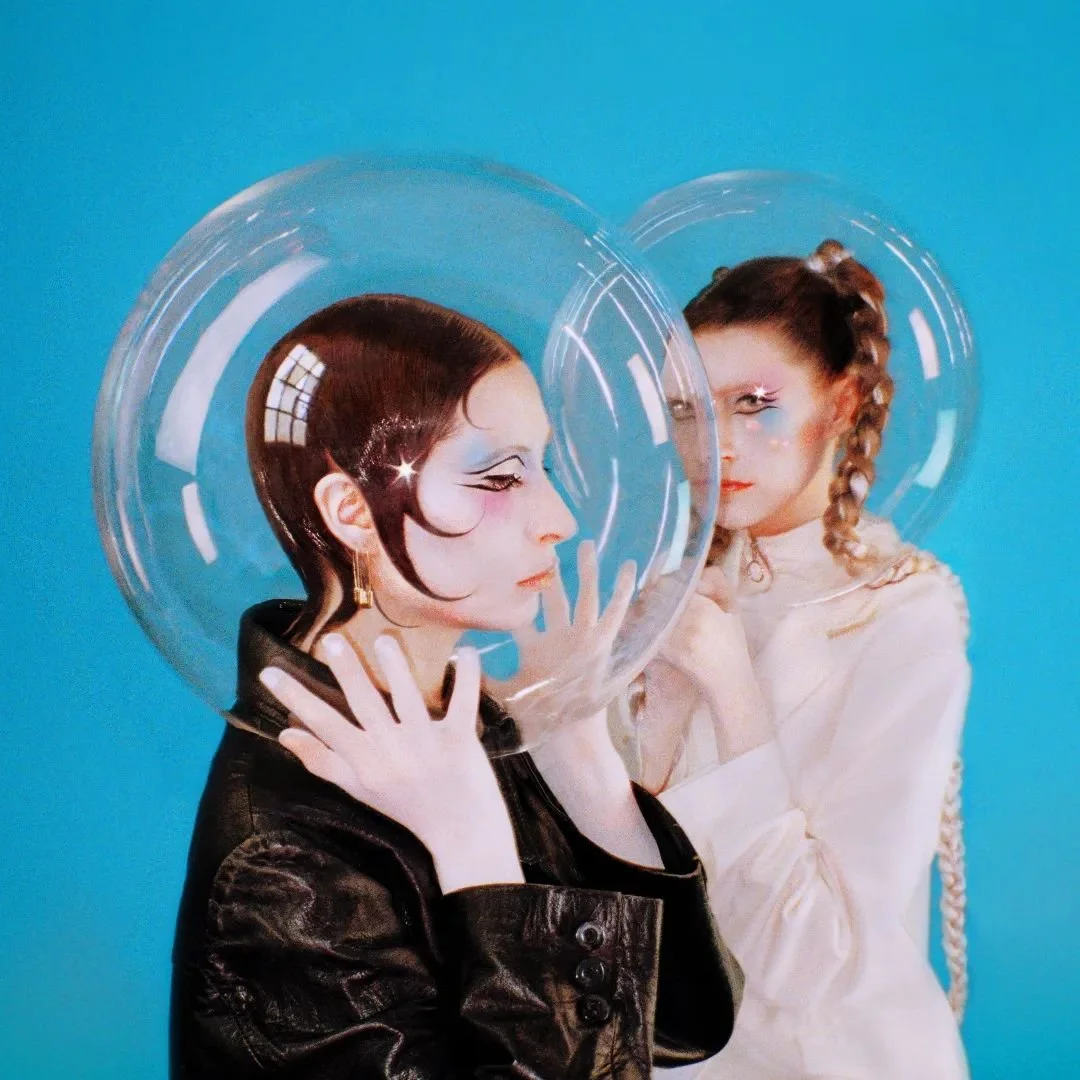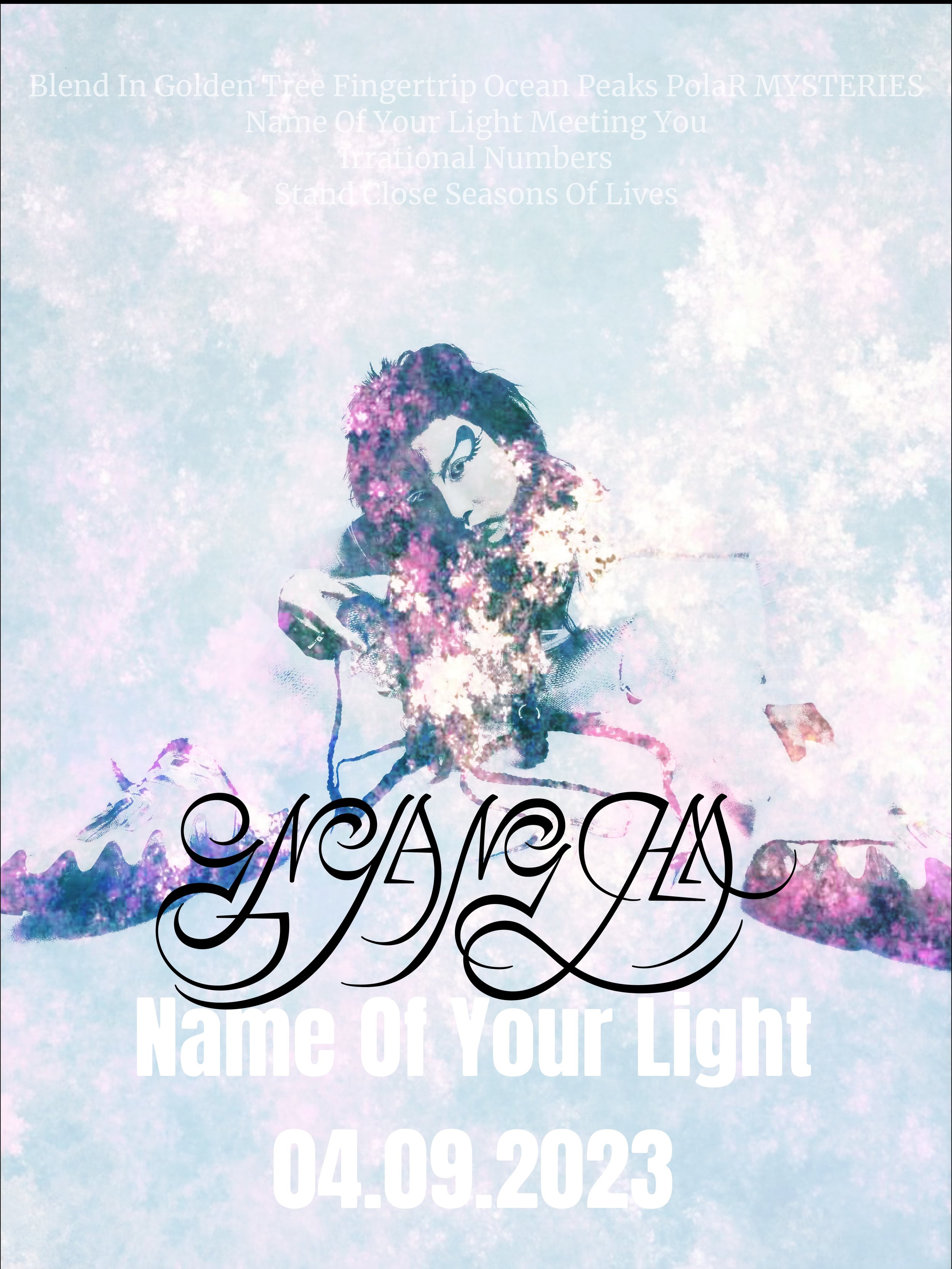Waterbaby
Waterbaby became a mystical force in the underground London scene, emerging in and out of the sanctuary of their studio to perform their hypnotic live show with artists as varied as Kedr Livansky, TAAHLIAH & Dorian Electra. Their music operates in a space where Cocteau Twins-esque anachronism meets the sharper edge of contemporary experimental electronica.
What does music mean to you in 2023 & how did this all start?
It started on arrival. Growing up as sisters we were constantly writing poetry, songs and making films and plays. We were inside all day, dreaming - it was our way of exploring the world.
Waterbaby originally began as an art project where we would soundtrack our experimental VHS films with electronic sound collages. We joined an art collective and would screen this audio-visual work in galleries. It wasn’t until later that we built a studio in Peckham and learnt how to produce. We kind of created self-imposed isolation where we spent hours and days obsessing over our craft, searching for our sound – along with many sleepless nights in our studio!
Music is like breathing for us, we need to make songs and create 24/7 in order to feel alive. Music is our lifeline, it shakes you awake in the morning, and it rocks you to sleep at night.
How did “Waterbaby” become your stage name, what’s the story behind it?
Waterbaby is a mood – an ethereal, ephemeral sprite-like creature that creates mischief in the ether. It is neither here nor there, something that shapeshifts and eludes you, confuses you. It is an abstract feeling. It suits us well as sometimes we feel like trying to communicate without music is like talking underwater.
What role does electronic synthesis play for you and your creative direction, since your work blends an electronic dreamscape with an ethereal approach? I assume because of your singing days in Southwark Cathedral Choir? From gospels to electro please speak about your relationship with the intangible space.
The idea of spirituality in music is very present in our work, of being ‘possessed’ with magic when creativity strikes. Even though we were never religious, the choir was like some kind of mystic practice for an agnostic. Choral music has influenced our production techniques in many ways – from the use of reverb, echo, layered singing and harmonies, bells and organ – but instead, we turn the traditional upside down and defy these rules to create a ‘warped choir’ effect.
We always had an affinity to electronic music as it felt very feminine and intimate, not only because of the rich history of female synth pioneers – but the fact because we could be sole conductors of our electronic orchestra without any outside help. It is liberating. Whether it is through choral singing or making electronic soundscapes – the same hypnotic trance-like state is experienced.
Your first track Thin Air, seems like a world of a glossy & shimmery fairytale. How did that track come to life?
The melody started as a synth line and then transformed into the lead vocal. It seemed to climb up a ladder higher and higher every time we worked on the song until it settled in its final form which is pretty hard to sing live! It’s like vocal aerobics. The synthetic folk guitar sound was composed on the Korg Trinity – one of our true loves.
We wanted to tell a story about duality – about the light and dark that exists within, and the pendulum of control that swings in all our relationships. Throughout the song, you soar and crash, and we wanted to make the production and songwriting reflect the message, so it really feels like a journey sonically through periods of ascent and descent. The vocals and sounds swoop from high-pitched, airy, and angelic, to urgent, distorted, and dusky. There is a sense of suspense and catharsis – a tug of war throughout the song.
Your music operates in a space where Cocteau Twins-esque anachronism meets the sharper edge of contemporary experimental electronica, how and what all it took you to reach this specific direction? What was your trial and error phase like? Take us through the challenges that you underwent.
Although we make electronic music, creating everything using computers and synths – we wanted our music to sound very human. Sometimes the journey to finishing something can take a long time – but this isn’t because of perfectionism, you are searching for something – the truth in the song. Through our process, we soon learnt to embrace mistakes and not try and correct them – to leave the unconscious decisions in.
The way we create is very individual to who we are – the production and songwriting are completely linked and come as one. Sometimes we see making music like constructing a sonic sculpture, building it up, cutting away and shaping the sound – or like a tapestry – weaving in different threads, creating patterns.
You have to get everything down as soon as it comes into your head. Any word, any idea, any sound – record it. Things can easily disappear – you must act fast. Let the ideas flow out from you, sometimes you don’t know which idea will be the most important, something seemingly insignificant could end up being the most profound. You just have to follow the thread and see where things go.
We don’t want to make our music feel quantized or set to a grid – the structures are organic and sometimes free-form, making sure there is a rough earthiness that captures the emotion. We want it to sound as though you are there in the room with us.
Music is a medium to create sensory & artistic stimulation, what other mediums do you work with that help you do what you do?
Waterbaby is an audio-visual project. Our visual and sonic worlds are intrinsically linked; they don’t exist without each other. We discuss the music video as we write, ideas inform the sound, and the imagery evolves as the project becomes more realised. Our music doesn’t feel finished until we do the visuals; it’s like the full stop on a song.
We made videos early – the film was the catalyst for our sound. We are endlessly inspired by art house movies and have always idolised visual and musical duos (Nam June Paik & Charlotte Moorman, Arca & Jesse Kanda, Yoko Ono & John Lennon, David Lynch & Badalamenti). The music video as a format can be radical and powerful, experimental yet still existing within the mainstream.
Our visuals are like surreal dream sequences – they are all self-directed, filmed and edited. We actually filmed an audio-visual album for our LP 22° Halo during lockdown in our flat – we blacked it out, and created a live-in film set, like our life was an endless performance. We literally slept and ate on the film set.
I wonder how it would feel to work in your studio. Can you please describe the ambience you work in? What mental space do you hold on to regular basis to keep your work’s creative direction distinct?
We built a studio in a warehouse in Peckham where we make all our music – it has no windows, no internet is very dark with red lights and we write lyrics and draw all over the walls.
The studio is a sacred space – when we are in there we can’t be reached, so as to be completely at one with the music we are working on. We feel safe in there – like it is a womb. To keep your creative direction distinct, I think you have to phase out the rest of the world.
Take us through the shifts and changes that you and your work have developed as artists, and how the evolution has changed how you express yourself in comparison to before.
In terms of production, we started off with zero knowledge – we didn’t really have any friends that did music when we began, so we just had to learn it all ourselves. We had no real idea of how to turn an idea in our head into a reality. It really was a matter of locking ourselves away to master our sound. We pushed it so far that we became too obsessed with details and then had a process of going backwards, having the knowledge there, but unravelling it – and setting ourselves free.
Your new single 'Tangerine' is a magnetic track that showcases your original approach to songwriting and an insular and feminine sonic world. I wonder what inspired you or continues to, to keep pursuing your craft.
Tangerine was inspired by an incident of street harassment - something women have to endure on a daily basis – so resilience is at its core.
Through writing Tangerine, we re-imagined ourselves as a tangerine, all the segments together in individual completeness – safe and protected, not wanting to let anybody break the wholeness of being a woman. We wanted the song to sound defiant and fighting back – that no matter how hard toxic masculinity can try, it will never break the universal strength and resilience of being a woman.
Listening to the song now – it sounds like a letter from our past self to our future self, telling us to carry on. This resilience is why we keep pursuing our art – it is our power.
In terms of what inspires us to keep pursuing our craft – an unfinished idea haunts us – so we keep on going.
Last but not least, what’s next for you, what new are you looking forward to incorporating in your work from now?
We are about to release our new album 22° Halo – on 12th May and will be performing a special audio-visual show to celebrate its release at IKLECTIK on 8th June.
Each time you create – it’s like being reborn. You start with nothing, blank – it’s like learning all over again. The memories of how you finished something are hazy, a blur. So, once the album is out, we will be reborn again for the next cycle.
interview JAGRATI MAHAVER
What to read next













